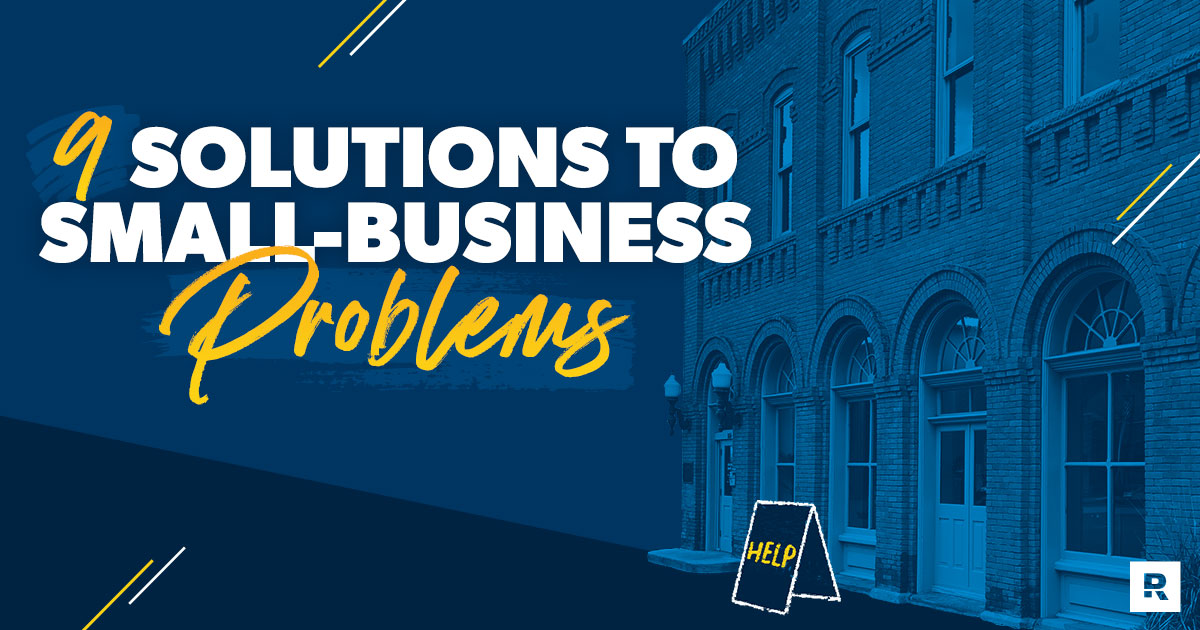
Introduction:
In today’s fast-paced business environment, solving problems efficiently is crucial for success. As entrepreneurs and business owners, we constantly encounter challenges that demand creative solutions. In this comprehensive guide, we’ll explore actionable strategies and expert advice on how I will solve our business problem now. From identifying key issues to implementing effective solutions, this article provides valuable insights to help you navigate obstacles and achieve your business goals.
Identifying the Problem:
Understanding the root cause of your business problem is the first step towards finding a solution. Whether it’s declining sales, operational inefficiencies, or market saturation, pinpointing the exact issue is essential for developing a targeted approach. By conducting a thorough analysis of your company’s strengths, weaknesses, opportunities, and threats (SWOT), you can gain valuable insights into areas that require improvement.
Conducting a SWOT Analysis:
Perform a comprehensive SWOT analysis to evaluate your business’s internal and external factors. Identify strengths that can be leveraged, weaknesses that need to be addressed, opportunities for growth, and threats to be mitigated. This analysis serves as a foundation for devising effective strategies to tackle your business problem head-on.
Developing a Strategic Plan:
Once you’ve identified the problem areas, it’s time to develop a strategic plan to address them. A well-defined plan outlines clear objectives, actionable steps, and key performance indicators (KPIs) to measure progress. By aligning your strategy with your business goals, you can ensure that every action contributes to solving the problem effectively.

Setting SMART Goals:
Define Specific, Measurable, Achievable, Relevant, and Time-bound (SMART) goals to guide your strategic plan. Whether it’s increasing revenue, reducing costs, or improving customer satisfaction, setting clear objectives helps focus your efforts and track results.
Implementing Innovative Solutions:
Innovation is key to overcoming business challenges and staying ahead of the competition. By embracing new technologies, processes, and ideas, you can discover innovative solutions to complex problems. Whether it’s adopting artificial intelligence (AI) for data analysis, implementing agile methodologies for project management, or leveraging blockchain for secure transactions, innovation drives progress and fosters growth.
Embracing Technology:
Explore cutting-edge technologies that align with your business objectives and solve specific pain points. From cloud computing and big data analytics to Internet of Things (IoT) devices and machine learning algorithms, technology offers endless possibilities for optimising operations and driving efficiency.
Leveraging Data Insights:
Data is a valuable asset that can provide valuable insights into your operations and customer behaviour. By collecting and analysing relevant data, you can identify trends, patterns, and opportunities that inform decision-making and drive strategic initiatives. Whether it’s customer feedback, sales metrics, or market research, data-driven insights empower you to make informed choices and adapt to changing market dynamics.
Data-driven Decision Making:
Make data-driven decisions based on empirical evidence and quantitative analysis. By leveraging data insights, you can minimise risks, maximise opportunities, and optimise performance. Whether it’s launching a new product, entering a new market, or reallocating resources, data-driven decision-making ensures that your actions are strategic and results-oriented.

Cultivating a Culture of Innovation:
Fostering a culture of innovation is essential for long-term success and sustainability. Encourage creativity, experimentation, and collaboration among your team members to generate fresh ideas and drive continuous improvement. By embracing a growth mindset and celebrating both successes and failures, you can create an environment where innovation thrives and propels your forward.
Promoting Creativity and Collaboration:
Create opportunities for brainstorming sessions, cross-functional teams, and knowledge-sharing initiatives. Encourage employees to voice their ideas and perspectives, regardless of their role or seniority. By fostering a culture of exclusivity and open communication, you can harness the collective intelligence of your workforce and unleash their full potential.
Investing in Employee Development:
Your employees are your most valuable asset, and investing in their development is critical for success. Provide ongoing training, mentorship programs, and professional development opportunities to empower your team members and enhance their skills. By fostering a culture of continuous learning and growth, you can equip your employees with the tools and knowledge they need to tackle challenges effectively and drive innovation.
Empowering Your Team:
Empower your employees to take ownership of their work and pursue opportunities for growth and development. Provide constructive feedback, recognition, and support to help them overcome obstacles and achieve their full potential. By investing in your team’s success, you create a motivated and engaged workforce that is committed to driving positive change and solving problems collaboratively.
In today’s dynamic landscape, encountering challenges is inevitable. However, it’s how we tackle these challenges that truly defines our success. In this article, we’ll delve into the process of identifying, brainstorming solutions for, implementing, and monitoring solutions to problems effectively.
2. Identifying the Business Problem
Understanding the Issue
The first step in solving any problem is understanding its root cause. We must conduct a thorough analysis to identify precisely what is hindering our growth or efficiency.
Analysing the Impact
Once we understand the problem, it’s crucial to assess its impact on various aspects of our, such as revenue, customer satisfaction, or employee morale. This helps prioritise which problems need immediate attention.
3. Brainstorming Solutions
Collaboration and Brainstorming Sessions
Harnessing the collective intelligence of our team through collaborative brainstorming sessions can yield innovative solutions. Everyone’s perspective is valuable in generating diverse ideas.
Researching Best Practices
Additionally, researching industry best practices and case studies can provide insights into how other companies have successfully tackled similar challenges. This external perspective can inspire new approaches.
4. Implementing Solutions
Developing a Plan
Once we’ve identified potential solutions, it’s time to develop a detailed plan of action. This plan should outline specific steps, responsibilities, timelines, and resources required for implementation.
Executing Strategies
Execution is key. We must ensure that the strategies outlined in our plan are implemented effectively. Clear communication, accountability, and adaptability are essential during this phase.
5. Monitoring and Adjusting
Tracking Progress
Monitoring the progress of our implemented solutions is vital to gauge their effectiveness. Key performance indicators (KPIs) should be established and regularly tracked to measure success.
Making Necessary Adjustments
Flexibility is crucial in problem-solving. If we encounter unforeseen challenges or if initial strategies aren’t yielding the desired results, we must be willing to pivot and make necessary adjustments.
8. Measuring Success
Utilising Key Performance Indicators (KPIs)
Establishing clear KPIs allows to quantitatively measure the success of their implemented solutions. These metrics could include increases in revenue, improvements in customer satisfaction scores, or reductions in operational costs.
Celebrating Milestones
Recognising and celebrating milestones achieved along the way boosts morale and reinforces the commitment to solving problems. It also serves as motivation for continued progress.
9. Continuous Improvement
Embracing a Culture of Continuous Learning
Encouraging a mindset of continuous learning and improvement ensures that businesses remain agile and adaptable in the face of ever-evolving challenges. This involves seeking feedback, learning from both successes and failures, and constantly seeking ways to innovate.
Iterative Problem-Solving
Recognising that problem-solving is often an iterative process allows business to embrace experimentation and iteration. Solutions may need refinement over time, and being open to feedback and iteration is key to long-term success.
10. Building Resilience
Diversifying Strategies
Relying on a single solution may leave vulnerable to future disruptions. By diversifying strategies and considering multiple approaches to solving problems, can build resilience and adaptability.
Scenario Planning
Anticipating potential future challenges through scenario planning allows business to proactively identify solutions and prepare contingency plans. This forward-thinking approach minimises the impact of future disruptions.
11. Engaging Stakeholders
Involving Key Stakeholders
Involving key stakeholders throughout the problem-solving process ensures buy-in and commitment to the implemented solutions. Stakeholders may offer valuable insights and perspectives that contribute to more effective problem-solving.
Communication and Transparency
Maintaining open communication channels and transparency throughout the problem-solving process fosters trust and collaboration among stakeholders. It ensures that everyone is aligned towards common goals and objectives.
12. Adapting to Change
Embracing Change
In today’s rapidly evolving business landscape, change is inevitable. must be willing to adapt their strategies and solutions in response to changing market conditions, technological advancements, or shifts in consumer behaviour.
Agility and Flexibility
Maintaining agility and flexibility allows to quickly pivot and adjust their strategies in response to unforeseen challenges or opportunities. This nimbleness is essential for staying competitive in dynamic markets.
13. Investing in Innovation
Allocating Resources for Innovation
Dedicating resources, whether financial, human, or technological, to innovation initiatives fosters creativity and drives continuous improvement. Investing in innovation ensures that remain at the forefront of their industries.
Experimentation and Risk-Taking
Encouraging a culture of experimentation and risk-taking empowers employees to explore new ideas and approaches to problem-solving. While not every experiment may yield success, the lessons learned contribute to overall innovation and growth.
14. Seeking External Expertise
Consulting Experts
In some cases, solving complex business problems may require specialised expertise or knowledge. Seeking external consultants or experts can provide valuable insights and fresh perspectives that complement internal efforts.
Collaborating with Partners
Collaborating with industry partners, suppliers, or even competitors can lead to mutually beneficial solutions. Through collaboration, can leverage each other’s strengths and resources to solve common challenges.
In conclusion, solving business problems requires a multifaceted approach that encompasses understanding, brainstorming, implementing, and continuously improving solutions. By following these strategies and embracing a culture of innovation and adaptability, can navigate challenges effectively and thrive in today’s competitive landscape.
6. Conclusion
In conclusion, solving business problems requires a systematic approach that involves understanding the problem, brainstorming solutions, implementing strategies, and continuously monitoring and adjusting. By following this structured process, we can navigate challenges effectively and propel our towards success.

